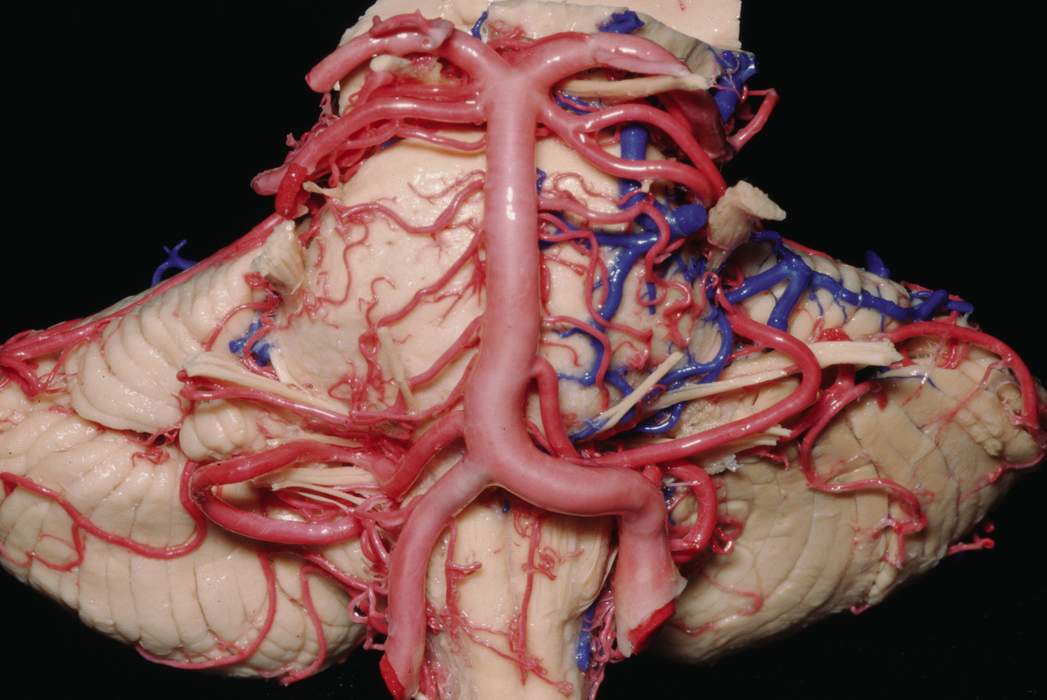Blood Supply of the Brainstem
6293

Surgical Correlation
Tags
Blood supply of the brainstem. The blood supply of the brainstem and cerebellum is derived entirely from branches of the vertebrobasilar circulation. The vertebral arteries enter the cranium via the foramen magnum and course superiorly along the ventrolateral surface of medulla. They then unite at the caudal border of the pons to form the midline basilar artery. The vertebral artery gives rise to the posterior inferior cerebellar artery (PICA); the latter vessel supplies the dorsolateral medulla and the posterior and inferior surfaces of the cerebellum. Occlusion of this vessel gives rise to Wallenberg’s or PICA Syndrome. The basilar artery gives rise to paired anterior inferior cerebellar arteries (AICA) and superior cerebellar arteries (SCA). AICA supplies the ventrolateral inferior pons and anterior inferior cerebellum, whereas the SCA supplies the lateral rostral pons and caudal midbrain and the entire superior surface of the cerebellum. Multiple penetrating branches of the pons originate directly from the basilar artery. The basilar artery terminates at the pons/midbrain junction by bifurcating into the posterior cerebral arteries (PCA). Penetrating branches of the PCA supply the rostral midbrain and caudal diencephalon. Variations in the symmetrical blood supply pattern shown here are common; the most frequent variations include marked atrophy of one vertebral artery, duplication of the SCA (seen here) and one PCA arising from the internal carotid artery instead of the basilar artery. (Image courtesy of AL Rhoton, Jr.)



